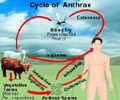
The study's senior investigator, Christopher Mason, said, "The research shows the resilience of the human body and that the bacteria is not enough to pose a threat to our health. The presence of these microbes and the lack of reported medical cases is truly a testament to our body's immune system, and our innate ability to continuously adapt to our environment. Perhaps most striking is that 48 percent of the samples matched no known organism, which highlights the vast wealth of unknown species that are ubiquitous in urban areas."
Hurricane Sandy caused havoc across the city in October 2012, and submerged South Ferry Station in Lower Manhattan in ocean water. The study found that even two years later, the majority of bacteria at the station are more commonly associated with fish species, marine environments or very cold Antarctic environments. It was also found that Penn Station, one of New York's busiest transit hubs, has a vast bacterial ecology that shifts by the hour.
Source-Medindia











